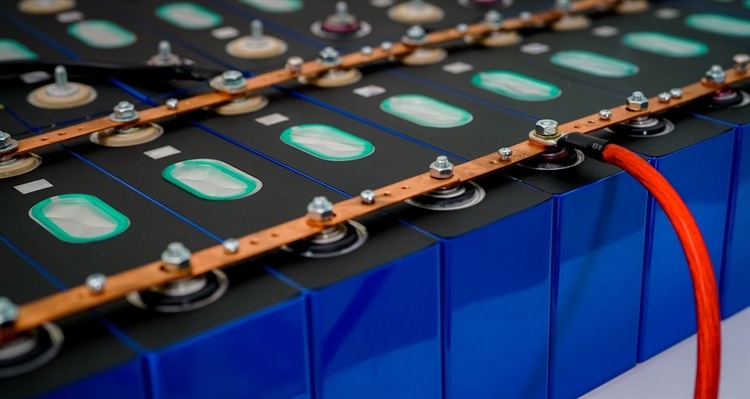Optimizing Solid-State Batteries: How Interfacial Adhesion Affects Lithium Plating

Author: Quantum Server Networks
Original article: AZoM News
Revolutionizing Battery Design Through Interface Engineering
As the world pivots toward electrification, solid-state batteries (SSBs) have emerged as a leading candidate to replace conventional lithium-ion batteries. Their promise lies in replacing flammable liquid electrolytes with stable, solid ones—unlocking pathways to safer, more energy-dense power sources for electric vehicles, portable electronics, and grid storage.
Yet, a major technical hurdle remains: achieving uniform lithium (Li) deposition. In a recent study published in Advanced Materials, researchers delve into how the mechanical adhesion between battery components influences Li plating behavior in anode-free solid-state batteries with carbon interlayers. Their findings could redefine how SSBs are manufactured for optimal performance.
The Power—and Challenge—of Anode-Free Batteries
Unlike traditional batteries, anode-free SSBs begin without lithium metal at the anode. Instead, Li is plated onto the anode side during the initial charge. This design simplifies manufacturing and can significantly enhance energy density. However, it also makes these batteries more sensitive to where and how lithium deposits—an issue that affects both cycle life and safety.
Irregular plating can lead to dendrite growth, interfacial instability, and even battery failure. Enter the carbon interlayer: a promising solution to regulate plating behavior and reduce mechanical stress. But how do we fine-tune its performance?
Carbon Interlayers and Lamination Pressure
The research team explored the effect of varying lamination pressures—from 100 to 400 MPa—on carbon interlayers made from amorphous or hard carbon blended with PVDF and NMP, then laminated onto Li6PS5Cl solid electrolyte pellets.
They used peel tests to quantify interfacial toughness and advanced PFIB-SEM imaging to examine lithium deposition patterns after charging to a capacity of 2 mAh cm-2. The results were revealing.
Key Findings: Pressure Drives Performance
At lower lamination pressures, the interfacial toughness measured just 9 J/m². Lithium plating occurred at both the carbon–solid electrolyte and carbon–current collector interfaces—leading to inconsistent and less predictable deposition.
Once toughness exceeded about 10 J/m²—achieved through higher pressure—plating shifted predominantly to the carbon–current collector interface. This transition represents a much more stable and predictable behavior, minimizing the risk of void formation, dendrite penetration, and mechanical degradation.
Design Insights and Industrial Relevance
This work offers an actionable design principle: interfacial adhesion is a tunable parameter that directly impacts battery reliability and efficiency. By setting a minimum toughness threshold, manufacturers can control deposition location, reduce degradation, and boost performance.
These insights are especially valuable for scaling up battery production. Simple adjustments to lamination pressure during fabrication could ensure more consistent product quality without introducing new materials or complex processes.
Next Steps: Toward Smarter Interfaces
Future research may explore surface treatments and alternative carbon materials to further optimize interfacial adhesion. Additionally, combining experimental findings with computational models can provide deeper insights into the electro-chemo-mechanical interactions that govern SSB performance.
With battery safety, longevity, and energy density all hinging on these delicate interfaces, the implications of this study stretch far beyond the lab bench. For industries looking to deploy next-generation batteries, controlling adhesion could be the secret ingredient.
Reference:
Liao, D. W., et al. (2025). "Effects of Interfacial Adhesion on Lithium Plating Location in Solid-State Batteries with Carbon Interlayers." Advanced Materials. DOI: 10.1002/adma.202502114
Tags:
#SolidStateBattery #LithiumPlating #BatteryInnovation #MaterialsScience #Electrochemistry #InterfacialAdhesion #CleanEnergy #CarbonInterlayers #EVBatteries #QuantumServerNetworks

Comments
Post a Comment